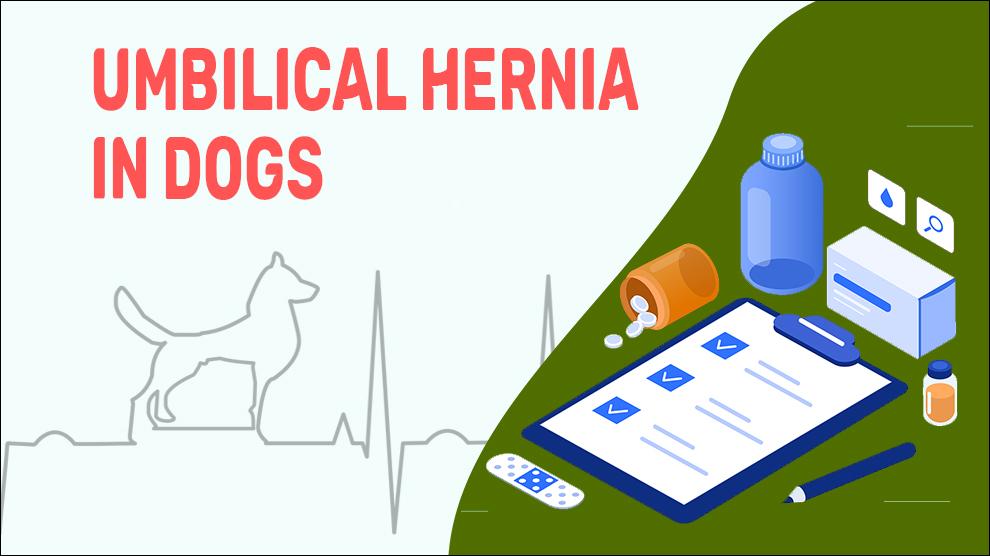What Is Umbilical Hernia In Dogs?
An umbilical hernia is an outward bulging (protrusion) of the abdominal lining, a portion of abdominal organs or abdominal fat, through the region around the navel (umbilicus). Umbilical hernias occur commonly and may be congenital or acquired. In general, an umbilical hernia is a disruption of the stomach wall at the umbilicus ring with an outcropping of the hernial sac consisting of abdominal contents.
In an unborn puppy, the abdominal contents protrude past the abdominal wall through the opening in the fetus's stomach wall (umbilical ring) that is connected to the placenta. Usually, the abdominal wall seals up on its own in puppies < 6 months of age, leaving a solid abdomen. When the umbilical ring does not close as it should be, a small fragment of fat tissues may protrude out the opening leaving an "outie" navel button.
Small hernias generally are often left untreated as they don't cause any problems. Large hernias may require surgery to seal the abdominal wall, as there is a risk that the abdominal contents within the hernia sac may become strangulated or damaged.
Intestinal loops strangulation can result in restriction of blood flow to the intestine and intestinal obstruction. Ultrasonography or Radiography may be required to help identify a strangulated hernia. Reducible hernias are the protrusions that can be pushed back into the abdomen while non-reducible hernias indicate at least partial adhesion or obstruction of the herniated contents to the opening.
Symptoms Of Umbilical Hernia In Dogs
- Evident pain
- Malaise or depression
- Warmth at the site of the umbilical swelling
- Vomiting
- Lack of appetite
Treatment Options For Umbilical Hernia In Dogs
Surgical Treatment:
If the opening is small, vets do not recommend surgical treatment. However, most defects will widen in due course with abdominal pressures like obesity, whelping, pregnancy, trauma, or exercise.
Umbilical hernias are typically corrected by a surgical procedure. The hernial sac is opened, if there are any sac contents, they are restored to the abdominal cavity and the sac is trimmed at the margins. The scar or fibrous tissues that have formed around the hernia are removed or dissected. The umbilical ring is sealed with a couple of sutures. At the time of spaying or neutering, surgical repair of the hernia is recommended as it takes only 15 minutes.
Home Remedies For Umbilical Hernia In Dogs
When the herniation is small or if the symptoms don’t bother the dogs so much or the dogs don't have any symptoms, you and your vet may simply continue to adopt the ‘wait and watch’ procedure.
On the other hand, for those who are too busy to wait and take care of dogs, you can immediately opt for surgery.
How To Prevent Umbilical Hernia In Dogs?
- There is no real way to prevent a hernia. Some of the breeds inherit the condition and others acquire it through other health issues
- Consult with breeders/vets to find out if the breed has a history of a hernia
- Congenital umbilical hernias can be prevented by stopping breeding dogs susceptible to umbilical hernias
- Multiple pregnancy and trauma are also major factors
Affected Dog Breeds Of Umbilical Hernia
Weimaraner, Airedale Terrier, Pekingese, Maltese, Basenji
Causes And Types For Umbilical Hernia In Dogs
1. Cause:
- Mostly congenital
- Rarely acquired: obesity, multiple pregnancies, or a long history of coughing.
2. Types:
Congenital umbilical hernias: Most umbilical hernias are congenital.
Acquired umbilical hernia:
- This is very rare in dogs but its frequency is higher in humans
- When a traumatic event such as a fall causes a significant blow to the dog’s abdomen or accidents such as being hit by a car
- Most often seen in female dogs
- Other Causes: increased abdominal pressure to other connective tissue problems, chronic coughing, pregnancy, and old age
3. Mortality:
In general, Umbilical hernia complications in dogs are very rare. Sometimes, strangulated or incarcerated hernia can cause death.
4. Diagnosis:
- A complete blood count (CBC), chemistry profile
- Abdominal ultrasound
- X-ray
- Special radiographic dye studies
5. Prognosis:
The prognosis for recovery is based on the size of herniated organs or other complications (If any) connected with a hernia. Overall, the outcome is generally good with earlier diagnosis and surgery.
The medical emergency in hernias arises only if the intestine—becomes incarcerated or trapped, and cannot retract to its original position cutting off its own blood supply. Incarcerated hernias should be treated to prevent strangulation.
When incarcerated organs become ischemic owing to the compromised blood supply, Strangulation happens to result in necrosis. This is a life-threatening condition and has to be addressed immediately.
When To See A Vet For Umbilical Hernia In Dogs?
Contact your vet right away, if you notice:
- Evident pain
- Malaise or depression
- Warmth at the site of the umbilical swelling
Food Suggestions For Umbilical Hernia In Dogs
- Home cooked meals, commercial homemade diet with a dehydrated formula or Semi-Homemade Food
- Home-cooked lean meats (beef, chicken, turkey, fish)
- Fibre rich foods: Apples, pears, oatmeal, and other foods
- Plant-based protein sources – Lentils, Chickpeas, potatoes, other Nuts and Seeds
- Fresh fruit/ vegetables (carrots, green beans, banana, water melon, apple and citrus fruits)
- Cooked spinach and potatoes
Conclusion
With appropriate treatment, the prognosis is good for dogs that even have had an incarcerated or strangulated hernia. It is always good to prevent your dog’s hernia becomes strangulated by taking the initiative earlier on. Seek treatment straight away if you think their hernia symptoms are getting escalated.

















